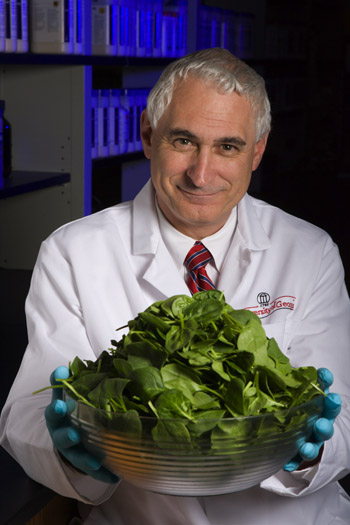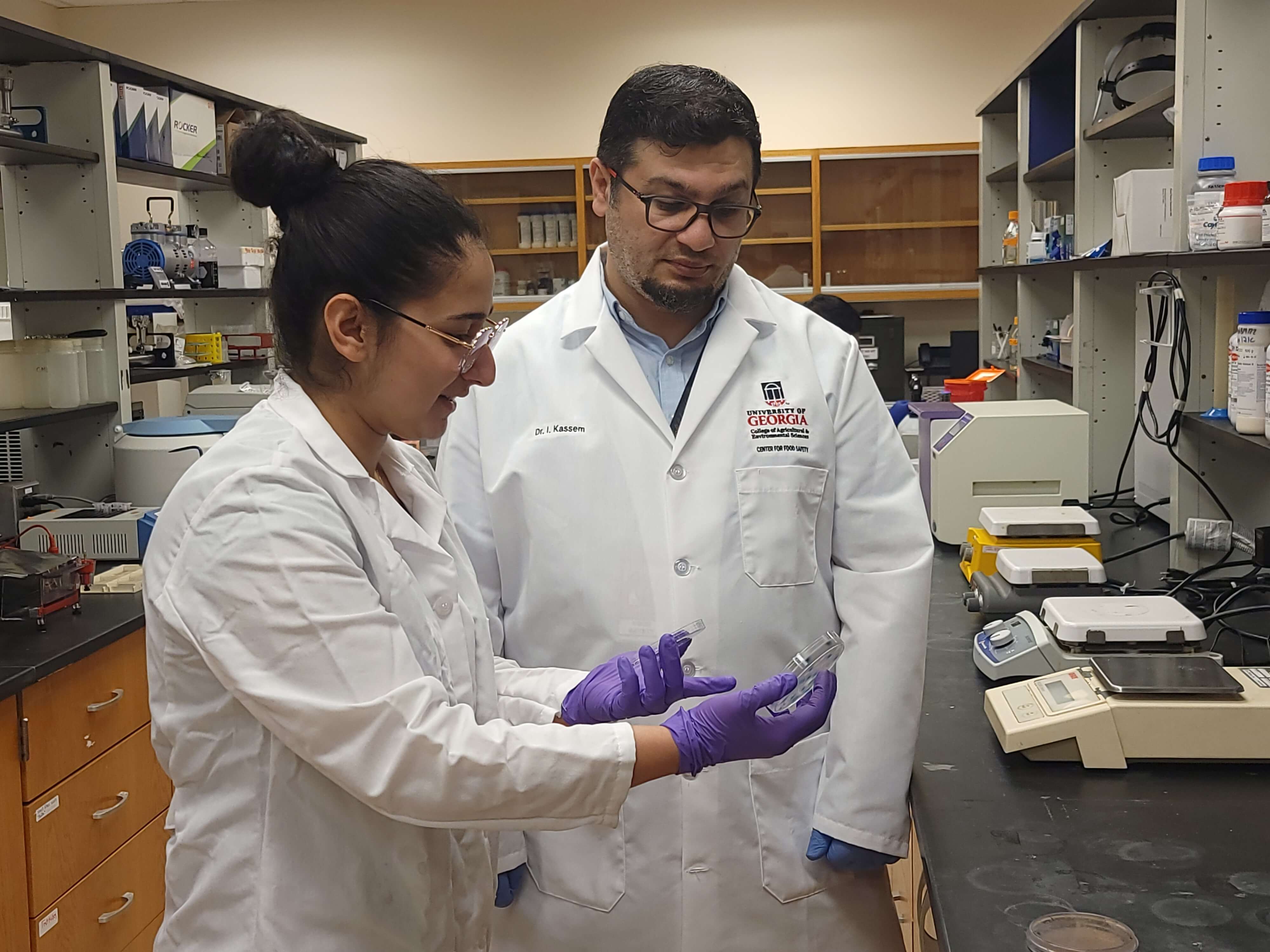Clinicians at hospitals and doctors' offices play a key role in ensuring consumers are aware of the threats of foodborne illness, says University of Georgia food safety expert Michael Doyle.
The Centers for Disease Control and Prevention estimates that every year one-in-six Americans -- or 48 million people -- becomes ill from foodborne diseases such as salmonella, listeria monocytogenes, E. coli or other illnesses caused by lack of food safety.
“Considering how prevalent foodborne illness is, many doctors are going to see patients with symptoms caused by foodborne pathogens. It's good for them to be more grounded in not just treating the patient, but better at advising the patient in how to prevent foodborne illnesses through appropriate food handling practices," said Doyle, a Regents Professor in the UGA Department of Food Science and Technology in the College of Agricultural and Environmental Sciences and director of the UGA Center for Food Safety in Griffin.
In an opinion piece published in the journal Clinical Infectious Diseases, Doyle and other center faculty discuss the future for food safety and how it might relate to clinicians. They focused on clinicians because they tend to put more weight on treating illnesses rather than preventing them; however, education is key to keeping illnesses from occurring, the UGA experts said. Clinicians will continue to play a major role in reducing foodborne illness by diagnosing and reporting cases and in helping to educate the consumer about food safety practices.
Doyle pointed out more common ways to prevent foodborne illness in the home. He believes clinicians should make patients more aware of these methods.
"When there's a problem with a processed food, and a lot of people eat it and get sick because of contamination, that gets a lot of publicity," Doyle said. "But a very small percentage of foodborne outbreaks is associated with processed foods."
Most outbreaks occur because food has been mishandled during food service or in a home -- through cross-contamination, temperature abuse or undercooking or when prepared by an ill food handler, he said.
When dealing with food safety practices, it is important, first, to recognize who is most susceptible to illness and, second, to identify the main causes of it.
Doyle and his UGA co-authors identified several key points to consider when talking about food safety. The first is that "the U.S. is becoming an aging population, and this population of older Americans is more susceptible to foodborne illnesses,” he said.
The elderly are more likely to experience severe complications from foodborne diseases, and they may not bounce back from the illness easily.
The UGA authors final two key points are the dangers of imported foods coming into the U.S. from other countries and climate change causing problems within the U.S. and driving some of the demand for imported foods.
Doyle said the drought in California has resulted in the U.S. importing more produce from other regions of the world like Latin America. Food producers in these regions do not always have the same level of sanitary practices that are used in the U.S.
“California has been our salad bowl for so long -- they were providing 70 percent of leafy greens and a lot of other salad-type products," he said.
Most food companies in the U.S. not only comply with existing regulations, but they have implemented additional measures to ensure products are safe from contamination.
Making consumers more aware of keeping foods safe will help with future prevention, but as of now, the U.S. relies on the activities of the CDC, FDA and U.S. Department of Agriculture to monitor, detect and trace back foodborne outbreaks.
"The CDC and the U.S. Food and Drug Administration have advanced methods for detecting and typing foodborne outbreaks by whole genome sequencing harmful bacteria," Doyle said.
The CDC's and FDA's genome sequencing approach is used for foodborne outbreak detection and investigation. The CDC also uses advanced surveillance systems that receive data from local, state and territorial health departments.
"I don't want people to go away thinking that we've really got a disastrous food safety problem in this country because, in reality, we've got one of the safest food supplies in the world," Doyle said. "But we still have issues to deal with to reduce the occurrence of foodborne illness."
Doyle’s co-authors are Walid Alali, Jennifer Cannon, Xiangyu Deng, Marilyn Erickson, Ynes Ortega, Mary Alice Smith and Tong Zhao, all in the Center for Food Safety and the UGA Department of Food Science and Technology.
The paper, "Food Industry's Current and Future Role in Preventing Microbial Foodborne Illness within the United States," is available with a subscription at cid.oxfordjournals.org/content/early/2015/03/29/cid.civ253.full.pdf+html.








